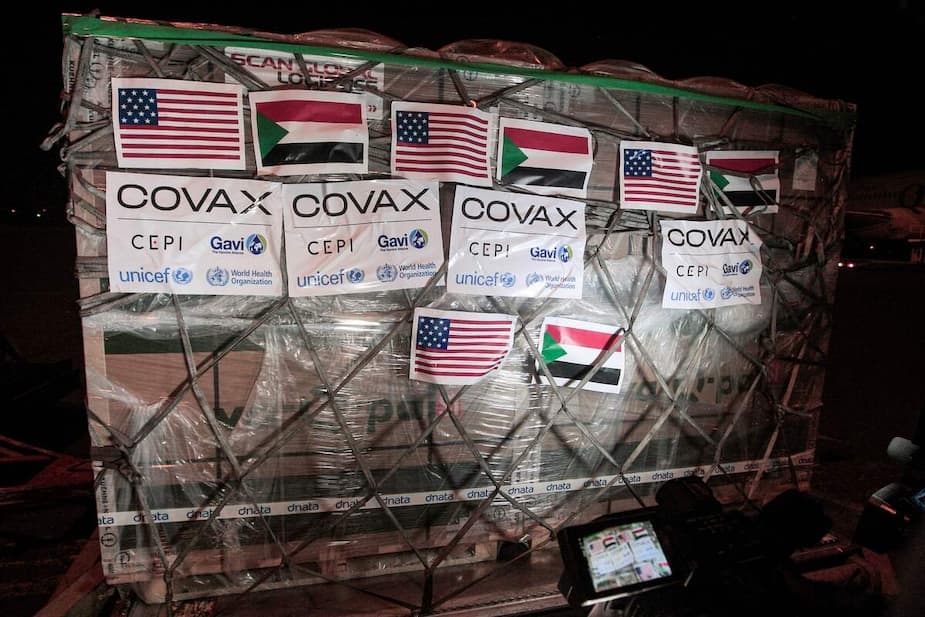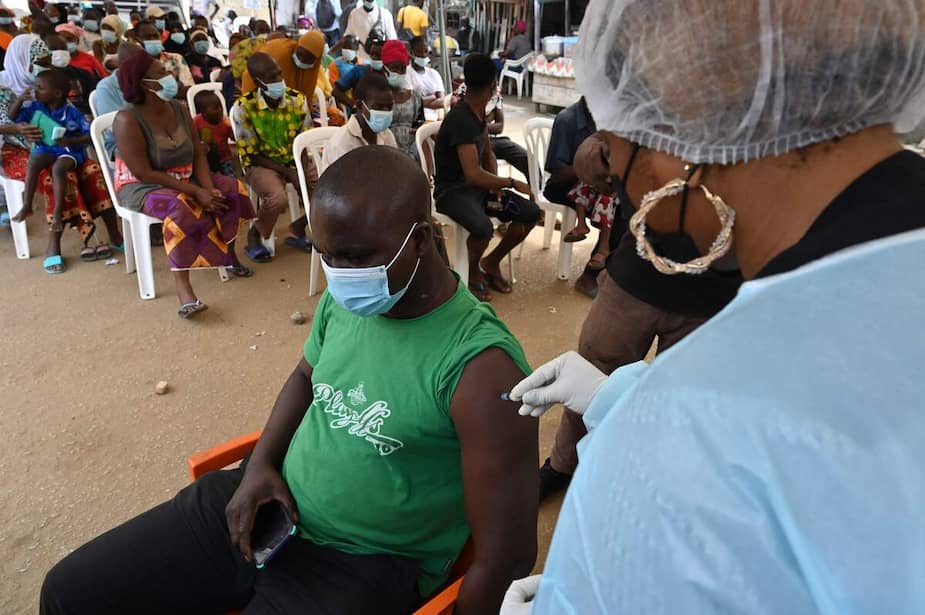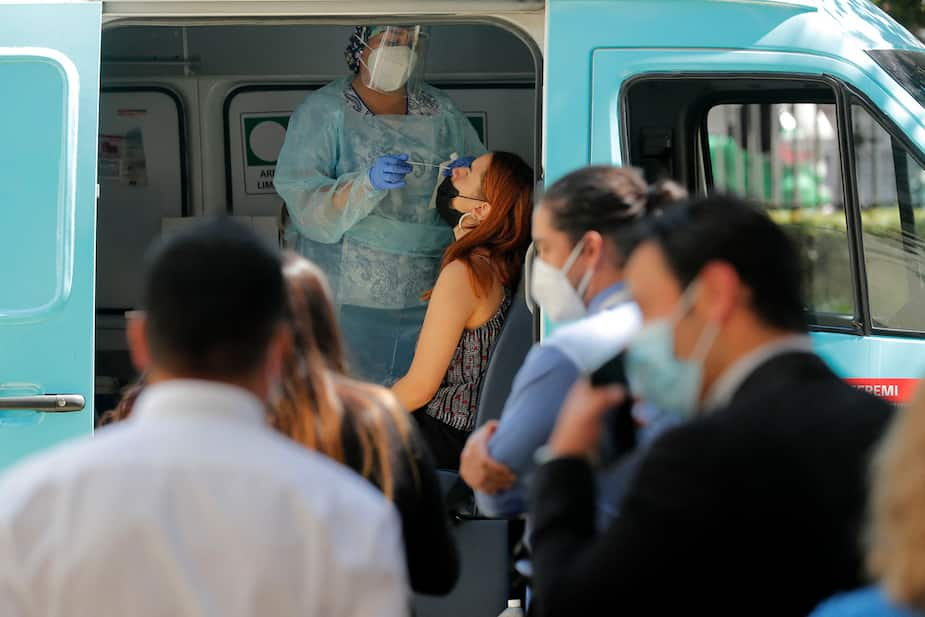The experts repeat it to all those who will listen: a majority of the world’s population must be fully vaccinated if we want to be able to put an end to the pandemic emergency. But that’s easier said than done. The challenges are great and the solutions, though close at hand, unused. Overview.
Read all the articles in our COVID-19: From Pandemic to Endemic series:
• Read also: What does it mean and how do we get there?
• Read also: When will Quebec be able to consider COVID-19 as a flu?
Currently, only 10% of the population in low-income countries has received at least one dose of vaccine, compared to 78% in high-income countries. The World Health Organization (WHO) estimates that, overall, 70% of the world’s population must be fully vaccinated to consider that there is good collective immunity.
In a pandemic that affects all of humanity, how to explain such a disparity in vaccination rates between more affluent countries and low- and middle-income countries more than a year after the start of vaccination campaigns?
The greed of rich countries has taken over global solidarity, laments Stuart Hickox, director of ONE Canada, an organization that fights poverty and preventable diseases.
High-income countries have bypassed the Covax platform, which had been set up in particular by the WHO to avoid inequities in the distribution of vaccines, and have made purchasing agreements directly with pharmaceutical companies.
“Rich countries rushed to protect their people before thinking about the rest of the planet,” he explains. In a way, it’s normal that the government had this reflex, because that’s the mandate we gave it when we elected it.”
• Read also: We answer 5 questions about the BA.2 sub-variant, Omicron’s “little brother”
Because rich countries did not follow the original plan, Covax never had the buying power to strike deals with pharmaceuticals to meet its goal of distributing two billion doses of vaccine in countries. low- and middle-income populations in 2021 and thus vaccinate at least 20% of this population.
“We were supposed to be sitting at the big table of the planet and we had to pool everything to then decide how to distribute the vaccines. One thing leading to another, we realized that the high-income countries had made their agreements on their side, ”adds the DD Joanne Liu, a professor in the School of Population and Global Health at McGill University on pandemic and health emergencies.
Big challenges
In addition to access to vaccines, the logistical aspect of vaccination campaigns poses a huge problem in low-income countries. Their governments have to deal with a complete lack of predictability in receiving doses. A situation that sometimes results in the waste of vaccines.
• Read also: If I had COVID, should I get my 3rd dose now or wait?
This is what happened recently in Nigeria, where only 3% of the population is fully immunized. Health Minister Osagie Ehanire claimed to have received millions of doses, many of which were nearly expired.
“It left us with very little time, just a few weeks, to use them, after deducting the time needed for transportation, clearing, distribution and delivery to users,” he said.
“[Nous refuserons] politely all donations of vaccines with short shelf lives or those that cannot be delivered on time,” added Osagie Ehanire.
Unfortunately, Nigeria is just one example among many.
The DD Liu confirms that the success of the vaccination campaign on a global scale depends on the presentation of a clear timetable and vaccines whose expiry date is as far away as possible.
“You cannot arrive with your mouth in heart in a country with one or two million doses which expire in one or two months. And the supply chain must be ensured, with the right cold chain, trained personnel and all the infrastructure to carry out the vaccination campaign”, illustrates the former president of Doctors Without Borders.
The experience of epidemics
Moreover, several African countries are accustomed to conducting such campaigns because they have had to deal with other epidemics, such as Ebola in West Africa. So they are not to blame for the low vaccination rate.
“There’s a lot of expertise, experience and infrastructure in place, but we haven’t given countries an idea of when they can reasonably expect to receive the doses, so they don’t can’t plan. And that’s the main problem: it’s not capacity, it’s predictability,” says Stuart Hickox.
• Read also: Canadians live different realities: here are the health rules by province
But this experience with epidemics is a double-edged sword, underlines the DD Liu. She saw it well in 2018, in the Democratic Republic of Congo, when the vaccination campaign against Ebola got under way. Health personnel faced a lot of resistance among the population, while Malaria was already taking its toll.
“It’s a disease that kills 50% to 60% of people affected, but people were telling us: ‘You come with your vaccines and your Ebola stuff, but the children are dying of Malaria.’ And that, you have to be ready to hear it and find ways to meet the other priorities of these populations.
We must also make sure to work in collaboration with less well-off countries, so as not to seem to want to impose vaccination on their populations from abroad, indicates the DD Liu.
What possible solutions?
In addition to adding the dimension of predictability to vaccine donations, Covax remains a good solution to reduce the vaccination gap in low-income countries.
“There’s no new dramatic idea because the first one was a really good one, it’s just that we didn’t apply it,” says Stuart Hickox.
For its part, the DD Joanne Liu calls it “scandalous” that Canada still hasn’t supported lifting patents on COVID-19 products.
However, it welcomes the initiative of a laboratory in South Africa, supported by the WHO, which has developed an RNA vaccine, based on public data from Moderna.
“These initiatives must be supported, just like the derogation on patents. We know it’s part of the solution.”
• Read also: Do you have COVID-19? You can now report your test result yourself
Joanne Liu also suggests adding diagnostic and treatment products for COVID-19 to Canada’s Access to Medicines Regime. This mechanism makes it possible to offer a license to a company to produce a generic drug so that developing countries can import treatments and medical devices at low cost. Treatments for HIV/AIDS, among others, are available through this program.
“It’s a simple vote in the House that can be done in the coming weeks. It’s not as if Canada doesn’t have the levers at its fingertips,” she says.
The variants, a sword of Damocles
If Omicron has taught us anything, it’s that variants remain a sword of Damocles hanging over our heads, as long as we haven’t reached an acceptable threshold of herd immunity.
“Each time the virus infects someone, it’s a new chance for them to mutate and become a new variant. Currently, three billion people are not vaccinated. So there are three billion chances for the virus to mutate. We must vaccinate everyone there to minimize this risk, ”says Stuart Hickox.
• Read also: Omicron variant: better to wear an N95 mask
While the WHO had set itself the goal of vaccinating 70% of the planet by the end of the first half of 2022, many already believe that many countries will fail in the task as the challenge is enormous.
“The scale of the vaccination challenge should not be underestimated, because it is not just about sending vaccines, but turning them into doses in people’s arms. And the wealthy countries will have to finance and support the low-income countries to get there, ”explains the DD Liu.
Because before thinking about the endemicity of COVID-19, we must first succeed in getting out of the state of health emergency on a global scale. This is the ultimate goal for 2022, insists Joanne Liu. “This is what will give the signal towards a certain stabilization”, indicates the expert of the epidemics.
Reference-www.24heures.ca




